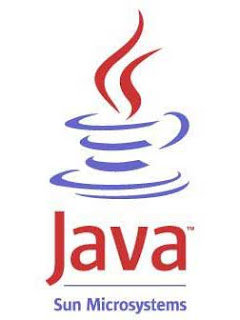 This article describes how to start making applications J2ME (Java applications for small devices, like phones, PDAs and others) without writing code programming code (source code) at all, because this article is addressed to programmers who have never made J2ME applications, may not bit desktop PC programmer who feels too difficult to create J2ME applications for mobile, hopefully this short article could provide an adequate explanation and provide a positive spirit to launch a J2ME application. Creating a J2ME application does not require a lot of complicated software or large, are certainly one of the software required is J2SE SDK / JDK, the J2SE SDK / JDK have runtime and library for Java programs in general as well as for J2ME, at the time this article was written has There J2SE SDK v1.4.2. To write source-code J2ME, then we need a J2ME IDE (integrated development environment), there are several options that include netbean IDE, Sun One Java Studio Mobility, CodeWarrior and notepad (or other text editor), luckily all the software mentioned IDE This can be downloaded for free at the official website of each company, so to make a J2ME program then the developer does not need to spend money at all to buy the software IDE. In this article which reviewed the IDE v4.1 with the addition of netbean netbean Mobility Pack v4.1, this extra is needed to create J2ME applications, because if only by netbean v4.1 can only create Java applications only, netbean Mobility Pack is a module- J2ME application modules and device emulator for testing in the PC. Other IDE can try but it is recommended to use netbean v4.1 because this version is very easy to operate and felt pretty fast compared to other IDE in terms of loading, compiling, running and debugging.
This article describes how to start making applications J2ME (Java applications for small devices, like phones, PDAs and others) without writing code programming code (source code) at all, because this article is addressed to programmers who have never made J2ME applications, may not bit desktop PC programmer who feels too difficult to create J2ME applications for mobile, hopefully this short article could provide an adequate explanation and provide a positive spirit to launch a J2ME application. Creating a J2ME application does not require a lot of complicated software or large, are certainly one of the software required is J2SE SDK / JDK, the J2SE SDK / JDK have runtime and library for Java programs in general as well as for J2ME, at the time this article was written has There J2SE SDK v1.4.2. To write source-code J2ME, then we need a J2ME IDE (integrated development environment), there are several options that include netbean IDE, Sun One Java Studio Mobility, CodeWarrior and notepad (or other text editor), luckily all the software mentioned IDE This can be downloaded for free at the official website of each company, so to make a J2ME program then the developer does not need to spend money at all to buy the software IDE. In this article which reviewed the IDE v4.1 with the addition of netbean netbean Mobility Pack v4.1, this extra is needed to create J2ME applications, because if only by netbean v4.1 can only create Java applications only, netbean Mobility Pack is a module- J2ME application modules and device emulator for testing in the PC. Other IDE can try but it is recommended to use netbean v4.1 because this version is very easy to operate and felt pretty fast compared to other IDE in terms of loading, compiling, running and debugging.
Steps undertaken by the J2ME application to start making is:
1. Install J2SE SDK v1.4.2 (50MB)
2. Netbean Install v4.1 (47MB)
3. Install netbean Mobility Pack v4.1 (18MB)
4. Run netbean v4.1, create a new project and select the category "Mobile" and the type of project "Mobile Application"
5. Select the location where to save the files of this project, "Set as Main Project" and "Create Hello MIDlet" should not be changed (checked)
6. On the page "Platform Selection" select "Device Configuration" = CLDC-1.0 and the "Device Profile" = MIDP-1.0 (the smallest version that can be used in all cellular support J2ME)
7. After all finished (tempate was created), run this application by pressing the F6 (Run Main Project).
8. Then this project will compile and the emulator will be out, use the mouse to operate the emulator, by pressing the keypad button pressed in the emulator is much like regular phones.
9. At this time, the application "Hello World" we have been created and can be directly tested on the actual provider.
Steps for testing applications that have been made, namely:
1. Cellular phones that support J2ME (MIDP v1 least).
2. Tools to move an application (. JAR and. JAD), which was made into a mobile, can be a data cable, infrared, bluetooth or card reader / writer if the provider you want to use as test devices have external memory slot, such as MMC, MemoryStick and other. How to transfer J2ME application just as I fill ringtones, images and more.
3. Software to move into the mobile J2ME application, can use the applications made by other companies (not artificial cellular vendors), such as MobiMB small size, easy and quick.In this article, phones used as the test is the Nokia 6015 (using a USB data cable) and Nokia 9500 (using the card reader / writer for copying files. JAR and. JAD into the MMC). Files - files that need to be transferred into the provider is the file. JAR (and. JAD if required) located in the directory "DIST", this directory location specified in step 5.We have completed a J2ME application "Hello World", to change the text or add an object - other objects such as TextBox, RadioBox, menu buttons, and others we can do in netbean, also without the need to write source-code for v4.1 already netbean have functions that are quite nice and easy with drag-and-drop a bit like Visual Basic and other programming that only require a change in the properties object if necessary as they say - he says, width height etc..Indeed, applications that have been made are not very useful, but for the programmers who have mastered the Java programming language it is not hard to make games for mobile applications or that might be easily sold to companies mobile content aggregator for mobile content business is quite good at this time .Options J2ME to create applications / games mobile is very good, because the file size small (JAR file Hello World we have created is only about 1 kilobyte only), Java language is relatively easier to learn than C / C + + for Symbian, Palm, Pocket PC and Linux, and why the latter is a free IDE for J2ME version is very good and easier to use.Possibility if all the steps described above fitted with exactly the same as by the beginner, it may only take less than 10 minutes to complete included in the provider, the editor only takes less than 3 minutes to complete





0 komentar:
Post a Comment